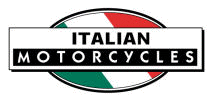


A Brief History of the Marque
Manufactured: 1980-1985 by the Centromoto company
Attractive trials machines powered by Franco Morini and Tau engines.
Alessio Bartolini of Florence (originally from the Tyrol) was an accomplished photographer who became a keen competitor in observed trials, to which he was introduced by Carlo Camarlinghi. Together they developed a prototype trials machine which in 1976 they named the Titania, believed to be the first Italian-built trials bike. This took the interest of Ancillotti, who employed them to build the first Ancillotti trials machines closely modelled on the Titania. Ancillotti assembled a team of riders, another Italian first, and campaigned in the Piedmont region, resulting in a win in the 1977 IWF 125 class. That year Ancillotti began production and around one hundred 125cc machines were produced along with a number of 50cc bikes (which may actually have been rebadged Moto Gori).
The Ancillotti motorcycles were not competitive against Fantic and the company lacked the resources to develop their products further, so Bartolini left and moved back to Florence, settling in Viareggio.
Using a Franco Morini engine, he redesigned the motorcycle with many new components including the frame and engine, and in 1978 a small production facility was established in the village of Montramito, about 10 minutes drive from Viareggio. The first 125cc machines were sold at the end of that year, and were well-received by both the riders and the press.
In 1979, after discussions with a German fellow, the engine was enlarged to 175cc using the MFM engine as a basis and a modified 125cc Sachs barrel, bringing displacement to 174cc. Fantic had recently released their Model 200, of 156cc, so for marketing purposes the new Panda was named the 220. Both machines were presented at the 1979 Milan Show, the 220 distinguished by an all-black engine, and in 1980 an example went to Germany for evaluation. A German magazine praised the machine overall, but the engine was found wanting.
Seigfried Shulbe, the German with whom Allesio had been collaborating, along with another German enthusiast who worked with Sachs, made a number of modifications to the machine with very positive results, and by 1981 affirmative reviews began to appear in the German press.
The West German importer of the Centromoto Panda was located in Bad Sooden-Allendorf on the border of East Germany.
One of the early prototypes used a Tau engine. Following the Fiat debacle, the next Centromoto model was named Valenti, and was powered by a 310 Tau.
A considerably more detailed article on this subject may be found at https://trialsguru.wordpress.com/2016/06/19/panda-trials-kurt-patrik-beckmann/
Sources: MC Storico Conti, trialsguru.wordpress.com, et al.
Images courtesy Justyn Norek Photography
If you have a query or information about Panda motorcycles please contact us